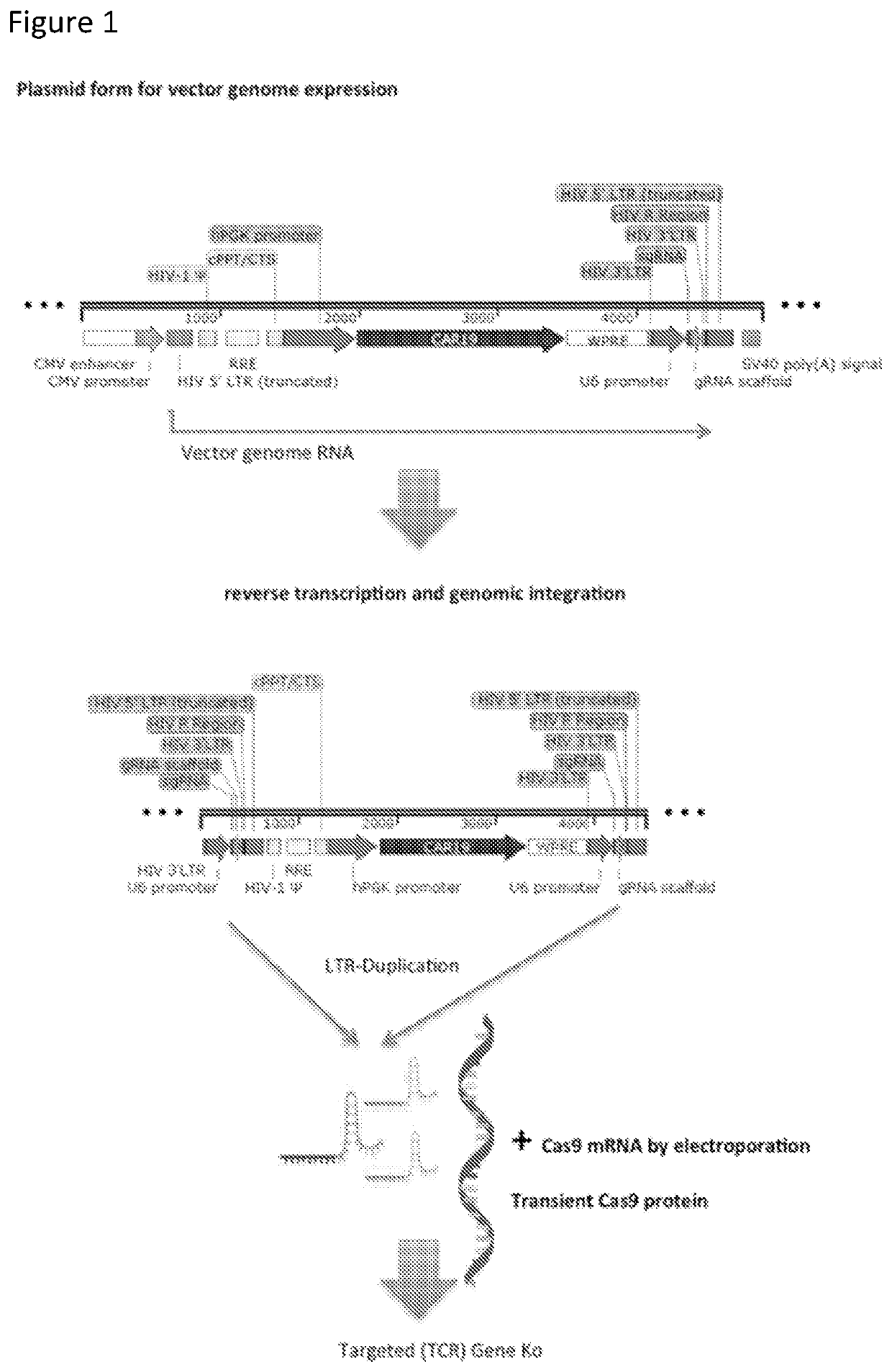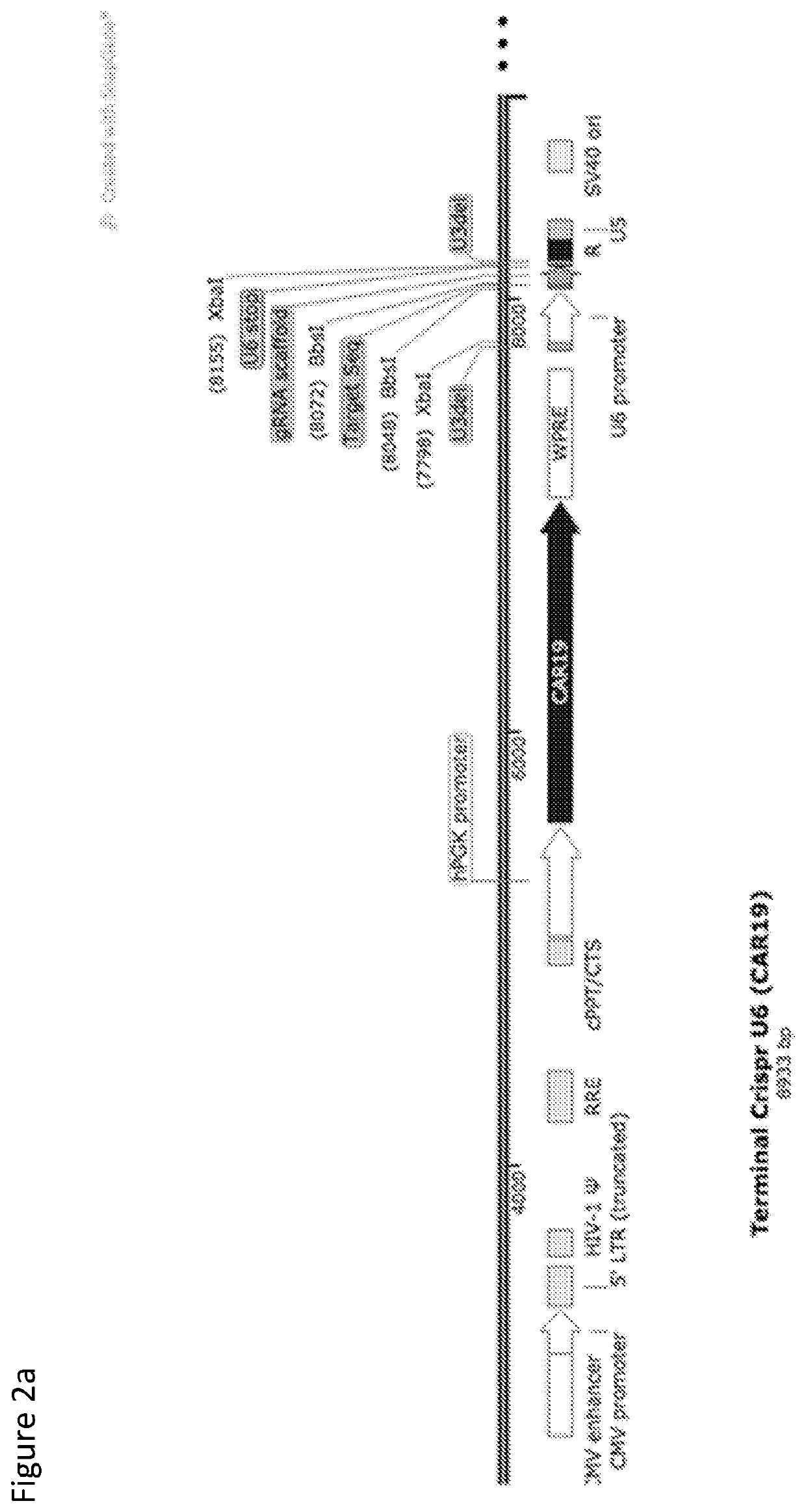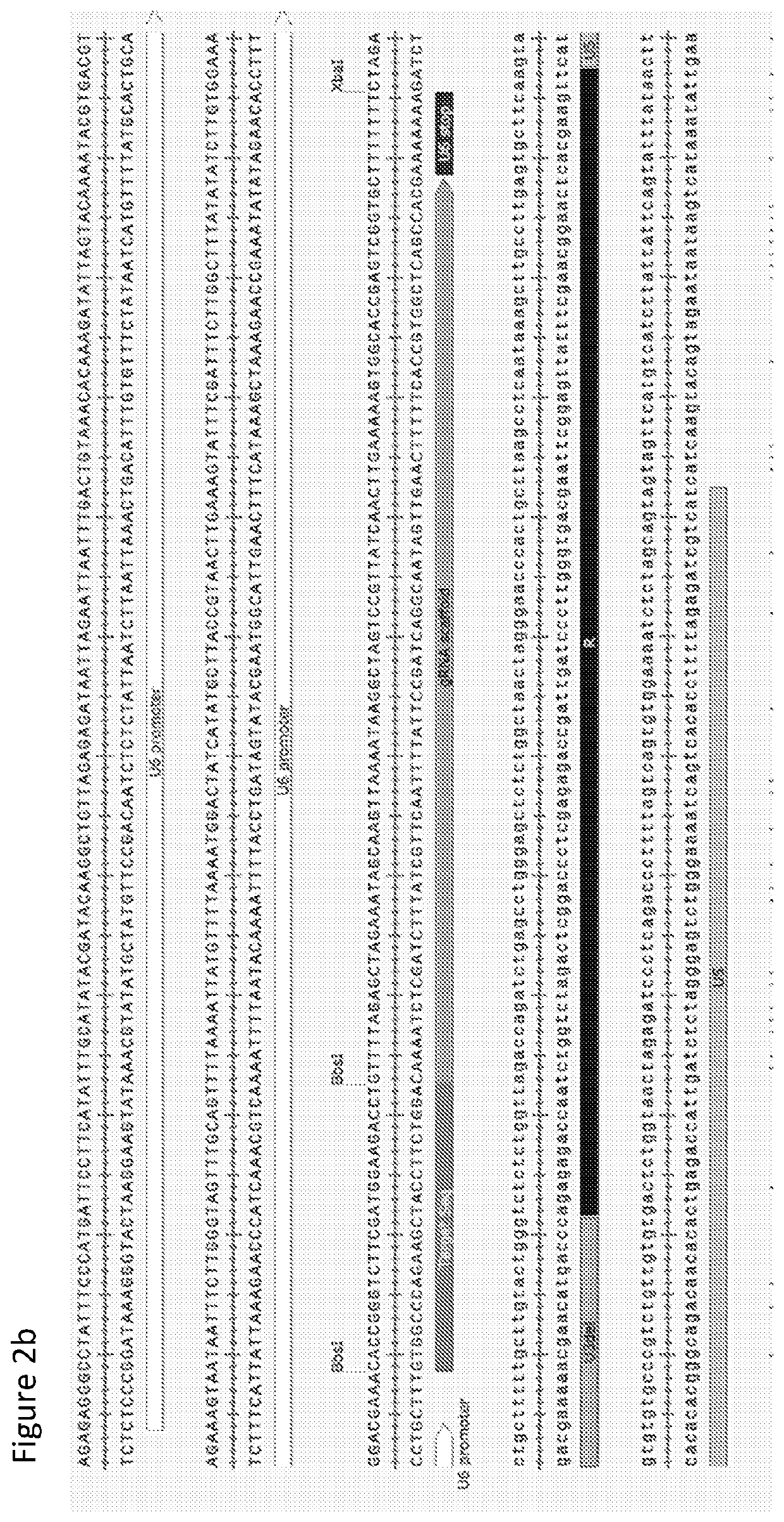Therapeutic cells
a technology of therapeutic cells and cells, applied in the field of therapeutic cells, to achieve the effect of broad and cost-effective potential therapeutic applications of such a cell
- Summary
- Abstract
- Description
- Claims
- Application Information
AI Technical Summary
Benefits of technology
Problems solved by technology
Method used
Image
Examples
example 1
[0266]We have demonstrated highly efficient gene editing effects using the terminal CRISPR configuration in cells that are first transduced with vector and then electroporated with Cas9 mRNA.
[0267]FIG. 1 provides a schematic representation of the “Terminal CRISPR” lentiviral plasmid. The vector is a third generation, integration competent but replication incompetent, self-inactivating lentivirus derived from HIV-1, with deleted U3 regions in the 3′LTR. This configuration requires accessory factors from three other packaging plasmids in order to produce functional virions. Expression of a therapeutic transgene is driven by an internal promoter (in this example PGK) and the vector incorporates a HIV central polypurine tract (CPPT) for nuclear entry and a mutated woodchuck postregulatory element (WPRE) for increased gene expression and titre. Virions delivery vector genome in RNA form, which undergoes reverse transcription an genomic integration. Incorporation of one or more CRIS...
example 2
n of T Cells Expressing Variant FcRIIIA
[0279]A schematic representation of a chimeric FcR (cFcR) vector plasmid is shown in FIG. 12. The vector is a third generation, integration competent but replication incompetent, self-inactivating lentivirus derived from HIV-1, with deleted U3 regions in the 3′LTR. Expression of a cFcR is driven by an internal promoter PGK. The vector incorporates a HIV central polypurine tract (CPPT) for nuclear entry and a mutated woodchuck postregulatory element (WPRE) for increased gene expression and titre. The cFcR includes a CD16 signalpeptide, human FcgRIIIa domain fused to an immunoglobulin light chain, CD8stalk and activation domains comprising 41BB and CD3ζ.
[0280]The function of T cells transduced to express cFcR is shown in FIG. 13. Transduced T cells engage the Fc domain of Rituximab, a widely used humanised monoclonal directed against the B cell antigen CD20, and mediated destruction of target cells. The incorporation of a light chain domain in th...
example 3
g of Cord Blood T Cells Using Density Gradient Separation
[0287]The T cell Transduction process on the CliniMACS Prodigy allows for the automated transduction and expansion of T cells. Our previous work has shown that this process can be used to generate a CD19-CAR T cell product from normal healthy peripheral blood leukapheresate (Mock, Nickolay et al). To investigate using the T cell Transduction process to engineer a T cell product from cord blood it was first critical to identify a means of isolating and enriched T cell population from whole cord blood. It is standard practice to enrich T cells from whole blood using density gradient separation (PMID 4179068). The Density Gradient Separation process on the CliniMACS Prodigy allows for the automated isolation of lymphocytes from whole blood (PMID 25647556). This process was performed using three cord blood donors to investigate if this process could be implemented to enrich T cells from whole cord blood. Samples of the cord blood ...
PUM
| Property | Measurement | Unit |
|---|---|---|
| nucleic acid sequence | aaaaa | aaaaa |
| time | aaaaa | aaaaa |
| resistance | aaaaa | aaaaa |
Abstract
Description
Claims
Application Information
 Login to View More
Login to View More - R&D
- Intellectual Property
- Life Sciences
- Materials
- Tech Scout
- Unparalleled Data Quality
- Higher Quality Content
- 60% Fewer Hallucinations
Browse by: Latest US Patents, China's latest patents, Technical Efficacy Thesaurus, Application Domain, Technology Topic, Popular Technical Reports.
© 2025 PatSnap. All rights reserved.Legal|Privacy policy|Modern Slavery Act Transparency Statement|Sitemap|About US| Contact US: help@patsnap.com



